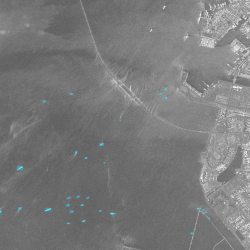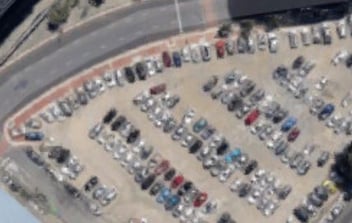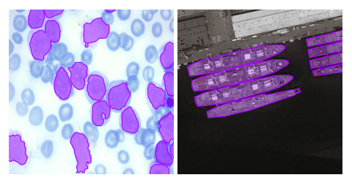Understanding Remote Sensing Images: Types, Applications & Uses

Explore the different types of remote sensing images and gain a deeper understanding of their applications and uses.
Introduction
Remote sensing is a technology that allows us to gather information about the Earth's surface without direct physical contact. It involves the use of sensors to detect and measure the electromagnetic radiation emitted or reflected by objects on the Earth's surface.
This technology has revolutionized various fields, including agriculture, environmental monitoring, urban planning, and disaster management. By analyzing the data captured through remote sensing, scientists and researchers can make informed decisions and gain valuable insights into the Earth's processes.
In this article, we will take a closer look at different types of remote sensing images and explore their applications in various industries.
Satellite Imagery
Satellite imagery is one of the most common types of remote sensing images. It involves capturing images of the Earth's surface from satellites orbiting the planet. These images provide a global perspective and are widely used in mapping, weather forecasting, and environmental monitoring.
Satellite imagery has revolutionized the way we view and understand our planet. It allows us to monitor changes in land cover, track the movement of icebergs, and even detect wildfires from space. With advancements in technology, satellite imagery has become more accessible and high-resolution, enabling us to study the Earth in unprecedented detail.
Low Earth Orbit (LEO) satellites are the workhorses of satellite image acquisition, circling the Earth at relatively close distances ranging from approximately 180 miles (290 kilometers) to 1,200 miles (2,000 kilometers) above the Earth's surface. These satellites boast distinct characteristics that distinguish them from their higher orbit counterparts.
-
Altitude:
- LEO satellites orbit at altitudes much closer to Earth compared to satellites in higher orbits, such as Medium Earth Orbit (MEO) or Geostationary Orbit (GEO).
-
Orbital Period:
- LEO satellites have shorter orbital periods, completing an orbit around the Earth in roughly 90 to 120 minutes.
-
High Orbital Speed:
- Due to their proximity to Earth, LEO satellites travel at high speeds, often exceeding 28,000 kilometers per hour (17,500 miles per hour).
-
Applications:
- LEO satellites are commonly used for various applications, including Earth observation, remote sensing, satellite imaging, and scientific research.
-
Global Coverage:
- Because of their lower altitudes and faster orbital periods, LEO satellites can provide more frequent coverage of different parts of the Earth's surface, making them suitable for applications that require near-real-time data.
-
Communication:
- Some communication satellites also operate in LEO, particularly in constellations designed to provide global broadband internet coverage. These constellations consist of multiple small satellites working together to cover the entire Earth.
-
Examples:
- Notable examples of LEO satellites include the International Space Station (ISS), Earth observation satellites like those in the Landsat program, and various constellations such as the Starlink satellite constellation by SpaceX.
LEO satellites are favored for certain applications due to their advantages in terms of lower latency, higher data transfer rates, and more frequent revisits to specific geographic areas. However, they require more satellites to achieve global coverage, and their shorter orbital lifetimes mean they need to be replaced or replenished more frequently compared to satellites in higher orbits.
Aerial Photography
Aerial photography is another commonly used technique in remote sensing. It involves capturing images of the Earth's surface from aircraft, such as planes or drones. These images provide a detailed and localized view of specific areas of interest.
Aerial photography has a wide range of applications, including land surveying, urban planning, and environmental monitoring. It allows us to capture high-resolution images of landscapes, buildings, and infrastructure, which can be used for various purposes, such as creating maps, assessing the health of vegetation, and monitoring the growth of cities.
Elctro-optical Imaging
Electro-optical imaging refers to the technology that combines optics and electronics to capture and process visual information from the electromagnetic spectrum, particularly in the visible regions. It involves the use of sensors and devices that convert light into electrical signals for the purpose of creating images or gathering data. Electro-optical imaging encompasses a variety of technologies, including cameras, sensors, and other devices, and it is widely used in fields such as surveillance, remote sensing, and military applications.
Electro optical images are often used when taking images from satellites and aircraft.
Key components of electro-optical imaging include:
-
Optical Systems:
- Lenses and other optical components are used to focus and manipulate incoming light.
- Optical systems play a crucial role in determining factors such as resolution, field of view, and image quality.
-
Detectors:
- Detectors, often in the form of charge-coupled devices (CCDs) or complementary metal-oxide-semiconductor (CMOS) sensors, convert incoming light into electrical signals.
- These detectors capture the spatial distribution of light across the image.
-
Signal Processing:
- Electrical signals generated by the detectors are processed and converted into a digital format.
- Signal processing may include tasks such as amplification, filtering, and digitization.
-
Image Formation:
- The processed signals are used to create visual images that can be displayed or further analyzed.
- Image formation may involve the use of display technologies such as screens or the creation of digital files for storage and transmission.
Synthetic Aperture Radar (SAR) Imaging
Synthetic Aperture Radar (SAR) imaging is a remote sensing technique that uses radar to capture images of the Earth's surface. It is particularly useful for imaging areas that are covered by clouds or experiencing poor visibility like night time.
SAR imaging has a wide range of applications, including mapping, geological exploration, and disaster monitoring. It can penetrate through clouds and vegetation, allowing us to study the Earth's surface regardless of weather conditions. SAR images also provide valuable information about the topography, vegetation, and man-made structures.
Near Infrared (NIR) Imaging
Near Infrared (NIR) imaging is a type of remote sensing that captures the near-infrared portion of the electromagnetic spectrum. It is particularly useful for assessing the health and vigor of vegetation.
NIR imaging has applications in agriculture, forestry, and environmental monitoring. By analyzing NIR images, scientists can determine the health of crops, identify areas affected by pests or diseases, and monitor changes in vegetation over time. NIR imaging also helps in assessing the overall biodiversity and ecosystem health.





